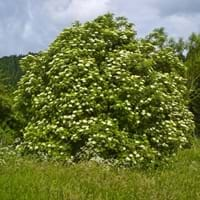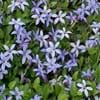Life Span
Perennial
Perennial
Type
Flowering Plants, Shrubs
Flowering Plants, Fruits, Herbs, Shrubs
Origin
Central Asia, China, Northern America, The Hiamalayas
Australia, South America
Types
Bigleaf hydrangea, Hortensia, Smooth hydrangea, Oakleaf hydrangea, Annabelle
Adams Elderberry, Black Beauty Elderberry, Black Lace Elderberry, Johns Elderberry, Nova Elderberry
Habitat
Forest edges, Hillside, Woods
Farms, Homesteads, Near organic waste disposal
USDA Hardiness Zone
Not Available
4-8
AHS Heat Zone
Not Available
8-1
Sunset Zone
21,22
2a, 2b, 3a, 3b, 4, 5, 6, 7, 14, 15, 16, 17
Habit
Arching/Fountain-shaped
Upright/Erect
Flower Color
Blue, Dark Purple, Light Purple, Red, White
White
Flower Color Modifier
Bicolor
Not Available
Fruit Color
Not Available
Purple, Red
Leaf Color in Spring
Dark Green
Green
Leaf Color in Summer
Light Green
Green
Leaf Color in Fall
Several shades of Green
Yellow green
Leaf Color in Winter
Light Green
Not Available
Leaf Shape
Oblovate
Compound
Plant Season
Early Spring, Late Autumn
Early Spring
Sunlight
Full Sun
Full Sun, Part sun
Type of Soil
Light
Loamy, Sandy, Well drained
The pH of Soil
Acidic
Slightly Acidic
Soil Drainage
Average
Average
Bloom Time
Spring, Summer
Early Spring, Spring
Repeat Bloomer
Insignificant
No
Tolerances
Drought
Pollution
Where to Plant?
Ground, Pot
Ground
How to Plant?
Seedlings, Stem Planting
Grafting, Seedlings
Plant Maintenance
Medium
Medium
Watering Requirements
Not Available
Requires regular watering, Use Mulches to help prevent water loss during hot and windy weather
In Summer
Lots of watering
Lots of watering
In Spring
Moderate
Moderate
In Winter
Average Water
Average Water
Soil pH
Not Available
Slightly Acidic
Soil Type
Not Available
Loamy, Sandy, Well drained
Soil Drainage Capacity
Not Available
Average
Sun Exposure
Not Available
Full Sun, Part sun
Pruning
Remove damaged leaves, Remove dead branches, Remove dead leaves
Cut or pinch the stems, No pruning needed in the early stages, Prune for shortening long shoots, Prune if you want to improve plant shape, Prune in winter, Prune ocassionally, Remove deadheads
Fertilizers
All-Purpose Liquid Fertilizer
All-Purpose Liquid Fertilizer
Pests and Diseases
Red blotch
Canker, Leaf spot, Powdery mildew, Stem spot, Tomato Ringspot Virus
Plant Tolerance
Drought
Drought
Flower Petal Number
Single
Single
Edible Fruit
Insignificant
No
Fragrant Flower
Insignificant
No
Fragrant Leaf
Insignificant
No
Fragrant Bark/Stem
Insignificant
No
Showy Foliage
Insignificant
No
Showy Bark
Insignificant
No
Foliage Texture
Bold
Medium
Foliage Sheen
Not Available
Matte
Evergreen
Not Available
No
Invasive
Not Available
Sometimes
Self-Sowing
Not Available
No
Attracts
Bees, Flies
Birds
Allergy
Chest tightness, Diarrhea, Dizziness, Nausea, Vomiting
Diarrhea, Nausea, Vomiting
Aesthetic Uses
Not Available
Not Used For Aesthetic Purpose
Beauty Benefits
Not Available
Not Available
Edible Uses
Not Available
Yes
Environmental Uses
Air purification
Air purification
Medicinal Uses
Fever, Kidney problems, Urinary tract problems
constipation, Fever, Heart problems, High cholestrol, HIV/AIDS, Nerve pain, swine flu
Part of Plant Used
Flowers, Root
Flowers, Fruits
Other Uses
Not Available
Not Available
Used As Indoor Plant
Not Available
No
Used As Outdoor Plant
Not Available
Yes
Garden Design
Not Available
Not Available
Botanical Name
Hydrangea
Sambucus nigra
Common Name
Hydrangea or hortensia
Elderberry
In Hindi
Hydrangea
Elderberry
In German
Hortensie
Holunderbeere
In French
Hortensia
Sureau
In Spanish
Hortensia
Saúco
In Greek
υδραγεία
Elderberry
In Portuguese
Hortênsia
Sabugueiro
In Polish
Hortensja
Bez czarny
In Latin
Hibiscus
Elderberry
Phylum
Not Available
Magnoliophyta
Class
Not Available
Magnoliopsida
Order
Not Available
Dipsacales
Family
Not Available
Adoxaceae
Genus
Not Available
Sambucus
Clade
Not Available
Angiosperms, Asterids, Eudicots
Tribe
Not Available
Not Available
Subfamily
Not Available
Not Available
Number of Species
Not Available
Properties of Blue Star Creeper and Elderberry
Wondering what are the properties of Blue Star Creeper and Elderberry? We provide you with everything About Blue Star Creeper and Elderberry. Blue Star Creeper doesn't have thorns and Elderberry doesn't have thorns. Also Blue Star Creeper does not have fragrant flowers. Blue Star Creeper has allergic reactions like Chest tightness, Diarrhea, Dizziness, Nausea and Vomiting and Elderberry has allergic reactions like Chest tightness, Diarrhea, Dizziness, Nausea and Vomiting. Compare all the properties and characteristics of these two plants. Find out which of these plant can be used as indoor plant. If you are interested to decorate your house and garden, find out aesthetic uses, compare them and select the plant which will beautify your surrounding. Along with beautification, try comparing medicinal and edible uses of Blue Star Creeper and Elderberry and you can choose the plant having best and most benefits.
Season and Care of Blue Star Creeper and Elderberry
Season and care of Blue Star Creeper and Elderberry is important to know. While considering everything about Blue Star Creeper and Elderberry Care, growing season is an essential factor. Blue Star Creeper season is Early Spring and Late Autumn and Elderberry season is Early Spring and Late Autumn. The type of soil for Blue Star Creeper is Light and for Elderberry is Loamy, Sandy, Well drained while the PH of soil for Blue Star Creeper is Acidic and for Elderberry is Slightly Acidic.
Blue Star Creeper and Elderberry Physical Information
Blue Star Creeper and Elderberry physical information is very important for comparison. Blue Star Creeper height is 6.56 cm and width 10.50 cm whereas Elderberry height is 9.00 cm and width 8.00 cm. The color specification of Blue Star Creeper and Elderberry are as follows:
Blue Star Creeper flower color: Blue, Dark Purple, Light Purple, Red and White
Blue Star Creeper leaf color: Dark Green
Elderberry flower color: White
- Elderberry leaf color: Green
Care of Blue Star Creeper and Elderberry
Care of Blue Star Creeper and Elderberry include pruning, fertilizers, watering etc. Blue Star Creeper pruning is done Remove damaged leaves, Remove dead branches and Remove dead leaves and Elderberry pruning is done Cut or pinch the stems, No pruning needed in the early stages, Prune for shortening long shoots, Prune if you want to improve plant shape, Prune in winter, Prune ocassionally and Remove deadheads. In summer Blue Star Creeper needs Lots of watering and in winter, it needs Average Water. Whereas, in summer Elderberry needs Lots of watering and in winter, it needs Average Water.


